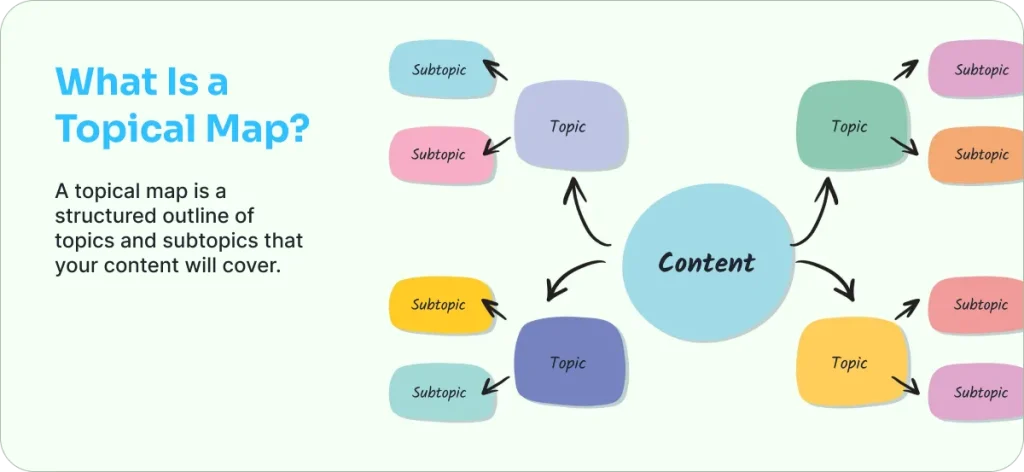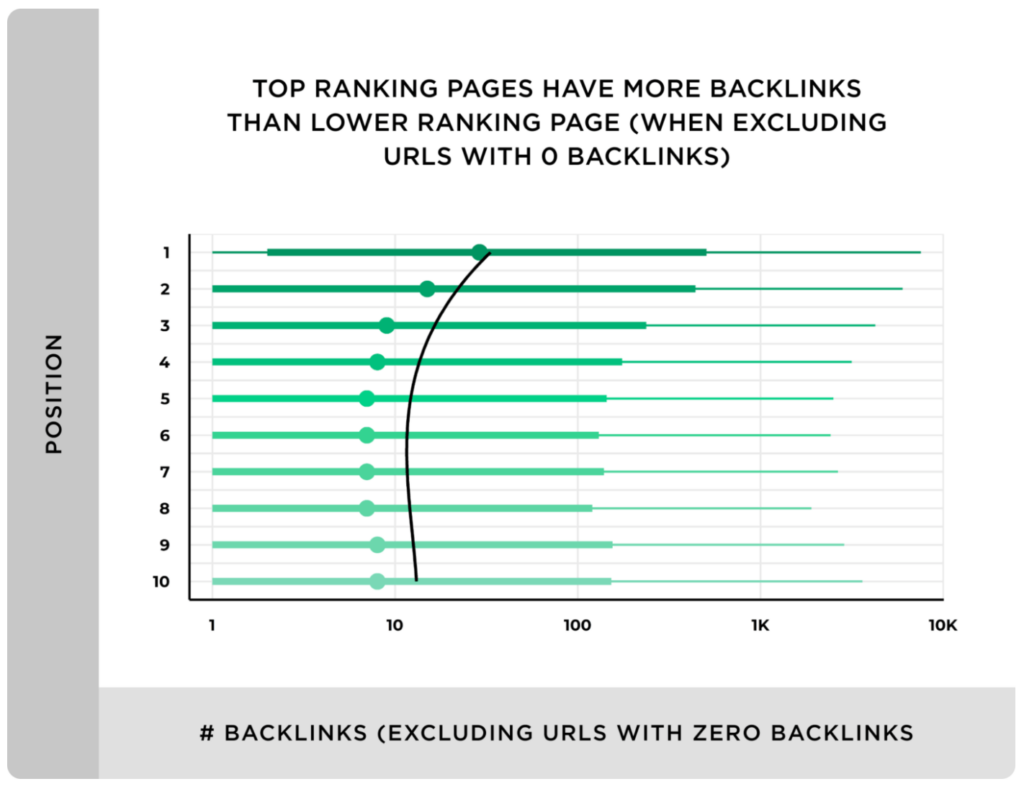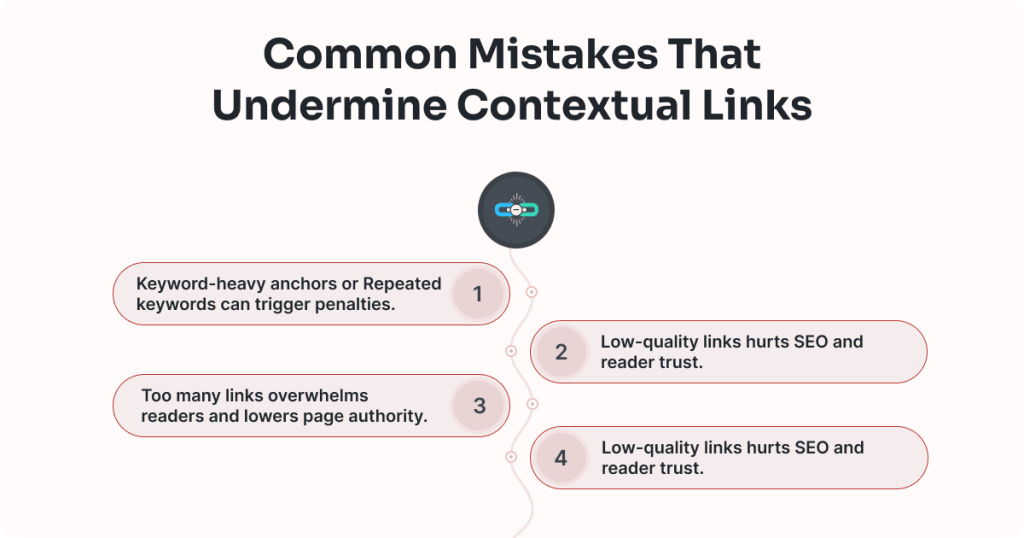The shortcut mindset no longer works but strategic niche edits still do. That’s why brands from bootstrapped startups to enterprise players quietly use them as part of their SEO playbook.
Think about it: why publish 1,000 new guest posts when you can ride the authority of 10 existing pages that already rank?
But leverage cuts both ways. If you buy shady links from hacked sites, expect Google’s spam filters to notice. If you earn contextual, editorial placements, the rewards stack over time.
This guide breaks down what niche edits are, how they work, the risks involved, and the right way to use them. Along the way, we’ll contrast them with guest posts, explore future trends, and show you how to avoid costly mistakes.
In this article…
Key Takeaways
- Niche edits = contextual links added to existing, indexed pages – Prioritize pages with topical alignment and real traffic to maximize value and reduce risk.
- Editorial relevance beats volume – One well-placed, descriptive anchor in a helpful paragraph outperforms multiple weak insertions.
- Compliance matters – Use correct link attributes (rel=”sponsored”, nofollow, ugc) whenever value is exchanged or endorsement is uncertain.
- Quality controls prevent problems – Vet host pages for real readership, clean link neighborhoods, and natural outbound patterns.
- Measure what users feel – Track impressions, CTR, and referral quality-don’t rely solely on third-party authority scores.
What are Niche Edits?
Niche edits are backlink placements inside existing content on authoritative websites.
Instead of creating a new article, the publisher updates an already-indexed page with a contextual link pointing to your site. This gives you immediate access to the page’s SEO value, trust signals, and organic traffic.

According to Moz, backlinks from relevant, authoritative sources are among the top ranking factors for Google search visibility.
By inserting links into aged content that already has authority, niche edits uses the SEO equity of established pages rather than starting from scratch.
Here’s a simple breakdown of how niche edits work compared to other link-building methods:
| Strategy | Content Type | Time to Index | SEO Equity | Effort Required |
| Guest Posts | New Content | Slower | Starts Fresh | High (content creation + outreach) |
| Niche Edits | Existing Content | Faster | Pre-built Authority | Moderate (outreach only) |
| Natural Links | Organic Mentions | Variable | Highest Trust | Low (but unpredictable) |
Why this matters
Google favors contextually relevant links inside quality content. When a niche edit is placed naturally inside an article that matches your industry, it signals to search engines that your site is credible and worth ranking.

But here’s the catch: not all niche edits are equal. If your link is added to a spammy site, a hacked page, or irrelevant content, it risks being flagged as manipulative.
That’s why niche edits sit in a gray area: powerful if earned legitimately, dangerous if abused.
How Do Niche Edits Work (Step-by-Step)
You identify context-relevant pages that already rank, pitch an on-page improvement, and secure a contextual link insertion that benefits readers and fits the article’s narrative.
The sequence is simple yet the execution decides everything.
Niche edits operate on a straightforward pipeline: prospect → qualify → pitch → place → re-crawl → monitor.
The smart move is to start with pages that already have traffic and topical alignment so your insertion reads like a natural “upgrade” to the content, not a bolt-on.

You (or the publisher) update the paragraph, add an anchor that accurately describes your page, and let search engines recrawl.
If the edit improves usefulness-think citing a better source, adding a missing step, or linking a definitive guide-it earns its keep through clicks and engagement.
The Step-by-Step Workflow
- Prospect high-fit pages: Find pages ranking for the keywords your audience actually searches, or listicles and how-to guides where your asset fills a gap. Favor domains with real traffic, topic alignment, and stable histories.
- Qualify opportunities: Check topical match, traffic, and the exact paragraph where your link would help. Avoid orphaned pages, spun content, or posts stuffed with unrelated outbound links.
- Craft the improvement: Offer a specific on-page enhancement (missing stat, step, checklist, tool) that naturally warrants linking to your resource. The litmus test: would a neutral editor keep this link six months from now?
- Pitch precisely: Personalize the ask, cite the paragraph, propose anchor text that mirrors user intent, and explain the reader value in one sentence. Keep it short and useful.
- Place the link: Insert a contextual anchor in the sentence where readers need it. Use descriptive, non-spammy anchors. If any compensation is involved, ensure proper link qualification and disclosures (handled in a later section).
- Request re-indexing (lightly): After the edit goes live, encourage natural recrawl. If you control the page, update the timestamp or internal links to prompt discovery.
- Monitor outcomes: Track the target page’s impressions, clicks, and ranking movement for the linked query family. Watch referral traffic and on-page behavior (CTR, time on page) to validate usefulness.
A strong backlink depends on several factors working together.
The relevance between the page topic and your asset, the placement of the link within explanatory text rather than in bios or footers, and the use of a descriptive, intent-matched anchor that avoids exact-match stuffing.
Equally important is the health of the referring page, which should have real traffic and not be part of a PBN, hacked, or spammy site. Finally, the link must add clear reader value by improving the surrounding paragraph.
Implementation Matrix
| Step | Objective | What Good Looks Like | Common Pitfall |
| Prospect | Find pages where your asset adds value | Ranking guides/listicles with steady traffic | Chasing any DR 70+ page regardless of topic |
| Qualify | Confirm fit & health | Clean history, topical match, consistent traffic | Thin content, link farms, irrelevant categories |
| Pitch | Win the edit | 2–4 sentence, paragraph-specific pitch | Generic emails and vague “resource” asks |
| Place | Add link users want to click | Contextual sentence with descriptive anchor | Sidebar/footer/profile links |
| Monitor | Validate impact | Search Console: impressions+CTR↑; Analytics: referral quality↑ | Only watching DR or vanity metrics |
Do Niche Edits Deliver Results?
Yes, when links are placed contextually on relevant, authoritative pages, they correlate with better visibility and traffic.
The strongest signals come from quality and relevance, not quantity.
Niche edits “work” when they earn their place in an already-ranking article and help readers accomplish a task. That combination-topical relevance, contextual placement, and real user value-lines up with how modern ranking systems weigh link signals.

The practical upside is faster exposure because you’re tapping into a page that already attracts impressions and clicks.
Under the hood, two mechanisms matter. First, links act as citations; when a reputable page references your asset, search engines can reassess your page’s importance for that topic family.
Second, links aid discovery and re-discovery-fresh link pathways catalyze crawling and can surface your page for related queries.
The catch: a strong link from a trusted, context-matched page will outperform a pile of weak, off-topic insertions.
That’s why a narrow focus on page quality and anchor relevance outperforms volume-based tactics.
If you’re building a defensible plan, prioritize editorial placements on real sites and use anchors that mirror searcher intent.
For programs where authority is the bottleneck, focus on fewer, higher-caliber insertions on pages with consistent organic traffic and topical overlap.
Validation Checklist
- Topical fit: Does the target article rank for queries in your keyword cluster?
- Context window: Will your link replace or enhance a sentence that solves a user problem?
- Traffic signal: Does the page attract stable impressions and clicks (not just a high DR/DA)?
- Anchor quality: Descriptive, natural language reflecting what users expect on click.
- Link neighborhood: Outbound links look editorial (not a “links-only” post or spammy roundup).
Ahrefs reports multiple studies where adding or removing backlinks impacted organic performance, reinforcing that high-quality backlinks remain a significant ranking input.
Why Niche Edits Carry Risks
The danger isn’t “link insertion” itself, it’s how the link was acquired, labeled, and placed. Paid, irrelevant, or manipulative insertions violate Google’s spam policies and can trigger manual actions.
Niche edits become risky when they cross into link schemes: exchanging money or goods for followed links, inserting links into irrelevant pages, or dropping anchors that read like ads.

Google’s spam policies explicitly call out buying or selling links that pass PageRank and other manipulative behaviors.
If you compensate a publisher, the link must use proper attributes (rel=”sponsored” or rel=”nofollow”) and live in content where a human editor would keep it without hesitation.
Risk also spikes when links land on pages with thin content, obvious “outbound link farms,” or hacked/expired domains, which can cluster your profile in a bad neighborhood.
From a program perspective, treat every potential edit like an editorial citation review. Ask: does the paragraph actually improve for readers, would the editor defend the link, and is the anchor descriptive rather than keyword-stuffed?
On paid collaborations, require disclosures, correct rel attributes, and avoid injecting links at scale on templated, low-trust pages. If you inherit legacy placements that look spammy, attempt removal first and document outreach.
Only then consider a disavow for stubborn, clearly toxic links.
Risk-to-Remedy Map
| Risk Scenario | Why It’s Risky | Practical Remedy |
| Paid insertion with dofollow | Violates spam policies on paid links | Use rel=”sponsored”; require disclosures |
| Off-topic page or paragraph | Relevance signal breaks; looks manipulative | Only insert where the content genuinely needs your resource |
| Anchor stuffing | Over-optimized patterns are detectable | Use natural, descriptive anchors that match user intent |
| Link farm / PBN page | Unnatural outbound patterns, weak content | Abandon the opportunity; prioritize real editorial sites |
| Legacy toxic links | Mixed-quality profile increases scrutiny | Request removal; document attempts; disavow as last resort |
Google’s spam policies list buying or selling links and other manipulative linking practices as violations, outlining how link schemes are handled in search.
How To Do Niche Edits the White-Hat Way
Treat every insertion like an editorial citation: relevant page, useful context, natural anchor, correct link attributes, and measurable user value. Get those five right and the program scales with far fewer surprises.
White-hat niche edits follow one principle: earn the link by improving the page. You’re not forcing an insertion; you’re fixing a gap-adding a missing definition, a clarifying step, a supporting stat, or a canonical resource.

The mechanics are simple, but the quality bar is high. Your target page should already rank for related queries. Your paragraph should benefit from a concise reference.
Your anchor should read like a promise the destination actually fulfills. If collaboration involves compensation or sponsorship, apply the correct rel attribute and ensure the placement still makes editorial sense.
That blend-editorial relevance + compliance + reader value-keeps your program resilient through updates and manual reviews.
An effective link comes from a page and paragraph with strong topical fit, uses descriptive and non-spammy anchor text, and appears within genuine editorial context rather than bios, sidebars, or footers.
It should sit on a host page with a clean “link neighborhood,” free from spam or manipulative practices, and include proper rel attributes whenever compensation or sponsorship is involved.
The Field Checklist
- Fit test: Does the target article answer the same user intent cluster as your asset?
- Context test: If your link disappears, does the paragraph lose clarity or completeness?
- Anchor test: Is the anchor a plain-language description users would expect to click?
- Compliance test: If value exchanged → use rel=”sponsored”; if UGC → use rel=”ugc”; uncertain endorsements → consider rel=”nofollow”.
- Quality test: Is the host page updated, readable, and free of mass outbound link stuffing?
Anchor & Attribute Matrix
When a link is placed as an editorial citation with no compensation, using an anchor such as “technical SEO checklist” with no attribute (dofollow) makes sense because it serves as a natural reference that adds genuine utility.
In a sponsored collaboration, an anchor like “research on email deliverability” should carry the attribute rel=”sponsored” to disclose the value exchange and stay compliant with policy.

For user-generated placements such as forums or comments, an anchor like “crawl budget basics” should be marked with rel=”ugc” to properly identify the UGC environment.
Finally, in cases of uncertain endorsement or compliance edge cases, an anchor like “site speed benchmarks” should use rel=”nofollow” to signal non-endorsement or uncertainty in trust.
Placement Patterns That Age Well
- Inside explanatory sentences, not at the end of a paragraph dump
- Near the claim your resource supports (stat, method, template, or tool)
- Early in the section where users encounter the need, not buried below the fold
- One strong link beats a cluster of weak, semi-related links on the same page
Google’s guidance on qualifying outbound links explains when to use rel=”sponsored”, rel=”ugc”, and rel=”nofollow”, and stresses clear, descriptive anchor text for users.
Guest Posts vs Niche Edits: Which Works Best?
Use guest posts to reach new audiences and shape narratives; use niche edits to tap into existing authority and traffic. Choose based on intent, resources, and timeline.
Guest posts and niche edits serve different roles. Guest posts create new content on another site under your byline, letting you control the angle, examples, and CTAs.

They’re ideal when you want thought leadership, list-building, and brand discovery. Niche edits insert your link into a relevant, already-indexed article, so you benefit from its existing visibility.
They’re ideal when your priority is accelerating discovery for a specific asset or supporting a topic cluster with contextual citations.
The practical move is to map each campaign goal to the right lever: audience building → guest posts; topical authority reinforcement → niche edits.
Pick the lever that matches your primary constraint: time-to-impact, content bandwidth, or publisher access.
Blend both in quarterly plans: thought leadership cadence from guest posts; compounding relevance via selective niche edits.
Quick Comparison Table
| Dimension | Guest Posts | Niche Edits |
| Core purpose | Build audience & authority with new content | Leverage existing page authority & relevance |
| Content control | High (you author the article) | Low (you edit a paragraph within an existing page) |
| Time to visibility | Slower (new URL must rank) | Faster (page already indexed/ranking) |
| Editorial bar | Full article quality + house style | Paragraph-level fit and usefulness |
| Ideal use case | Thought leadership, narrative control, list building | Contextual citation to strengthen topic clusters |
| Key risk | Over-prioritizing links over value | Irrelevant or non-compliant insertions |
Decision Framework (3 Questions)
- Goal: Do you need audience expansion or topical reinforcement?
- Asset readiness: Do you have a unique viewpoint for a full article, or a definitive resource that complements an existing one?
- Timeline: Can you wait for a new post to rank, or do you need quicker exposure via a page that already performs?
Execution Notes You Can Reuse
Guest posts: Pitch angles tied to the publisher’s readership, include original data or examples, and write with their editorial voice. Use a single, descriptive in-body link that matches reader intent.
Niche edits: Target evergreen posts with stable traffic, propose a concrete improvement (missing stat, clearer step), and place a descriptive anchor inside the sentence that benefits from your resource.
SEMrush defines guest posts as articles you publish on other sites to reach new audiences and potentially earn backlinks, outlining the process (find relevant sites, pitch, meet editorial standards).
Common Mistakes & How To Avoid Them
Most problems come from irrelevant placements, over-optimized anchors, and non-compliant link attributes. Fix those three and your risk profile drops fast.
Niche edits fail when they look like manipulation rather than editorial improvement. Three patterns cause trouble: inserting links on off-topic pages, stuffing exact-match anchors, and ignoring link qualification when value is exchanged.

Add in weak “link farm” pages, cluttered paragraphs, and buried placements, and you’re signaling noise-not expertise.
The remedy is simple, systematic quality control: only place links where your resource genuinely clarifies the paragraph, keep anchors descriptive in natural language, and apply the right rel attributes (sponsored, ugc, or nofollow) when appropriate.
That approach aligns with search guidelines and preserves the credibility you’re trying to build.
Five-Step Prevention Workflow
- Qualify the page and paragraph for topical alignment before outreach.
- Draft the exact sentence where the link will live; ensure the paragraph improves.
- Choose a descriptive anchor that mirrors user intent (avoid keyword stuffing).
- Confirm attributes (sponsored, ugc, nofollow) when value or user-generated contexts apply.
- Document placement details (URL, section, anchor, attributes) and review monthly for consistency.
Niche Edits in 2025 & Beyond
Niche edits will remain viable when they read like real citations on real pages-and they’ll be devalued when they look manufactured. Google’s recent policy shifts reward authentic editorial context and punish scaled manipulation.
Three forces shape the next era. First, policy and enforcement: Google’s 2025 spam and core updates targeted abusive patterns (mass-produced content, expired domain abuse, site reputation abuse).
That trajectory favors editorially justified link insertions and reduces the upside of low-quality placements.
Second, AI-shaped SERPs: AI Overviews and richer result types compress attention. Links that users actually click-because they sit near a claim, stat, or process-carry practical value beyond raw authority.
Third, publisher incentives: quality publishers are more cautious about outbound links, which means more rigorous editorial standards and clearer labeling of sponsored relationships.
Programs that align with these realities-context-first, user-first, compliant-will sustain.
Operating Model Built for Updates
- Small, high-quality batches over volume: triage 10–20 opportunities per month where your asset truly helps readers.
- Evidence-backed pitches: attach the exact sentence you’ll improve; cite a specific fact or framework your page covers.
- Placement governance: log anchors, attributes, and link neighborhoods; review monthly for patterns.
- Measure user behavior: watch referral CTR, scroll depth, and assisted conversions, not just third-party authority metrics.
Conclusion
Niche edits work when they read like citations that improve an already useful page-relevant context, accurate anchors, and correct link attributes.
Treat them as editorial enhancements, not transactions, and they become a reliable part of a durable SEO program.
Niche edits aren’t a silver bullet; they’re a disciplined process. Start with pages that already attract searchers in your topic cluster.
Offer a concrete paragraph-level improvement-clarifying definition, missing data point, or a better how-to step-and place a descriptive anchor where users need it.
If compensation or sponsorship is involved, use the proper rel attributes. Then track what matters: impressions, CTR, assisted conversions, and whether the placement actually helps readers complete the task they came for.
This approach aligns with modern search expectations: useful content, transparent linking, and links that signal real value rather than manufactured patterns.
FAQ – Niche Edits
Are niche edits allowed in SEO?
Yes-when they’re genuine editorial citations that help readers. Paid or manipulative insertions violate policy and should be qualified appropriately.
Should paid niche edits use special attributes?
Yes. Use rel=”sponsored” for compensated placements; nofollow when endorsement is uncertain; ugc for user-generated contexts.
What anchors are safest?
Descriptive, natural-language anchors that match the destination page. Avoid keyword-stuffed, repetitive exact matches.
Where should the link go in the article?
Inside the sentence that benefits from your resource-near the claim, step, or stat the link supports.
How do I choose target pages?
Look for evergreen, topically aligned articles with stable organic traffic and clean outbound link profiles.
Can niche edits replace guest posts?
They serve different goals. Use niche edits for contextual citations; guest posts for audience building and narrative control.
What metrics should I watch after placement?
Impressions, CTR, referral quality, and assisted conversions on the target page-checked bi-weekly.
When should I avoid a placement?
Skip off-topic pages, link farms/PBNs, and paragraphs packed with unrelated outbound links-or any opportunity requiring non-compliant treatment.




